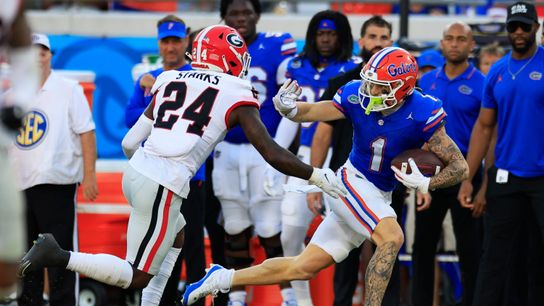Earlier this month, The Athletic first reported the existence of College Sports Tomorrow, a push from 20 executives across the college football industrial complex to unite and fully modernize the sport under a singular umbrella.
Further reporting revealed that the Athletic piece was not CST's grand opening, but rather a death knell: behind the scenes, with the people that mattered, the idea was dead on arrival long before you and I learned of it.
Still, it was an interesting attempt to actually accomplish what everyone agrees is necessary and inevitable: cutting players in on the billions of TV dollars; a formal players union to bring some limitations to NIL and the Portal; putting UCLA and Cal back in the same conference.
The folks at Sportico obtained a pitch deck that CST circulated behind the scenes back in February, and their attempts to "fix" college football explain why this plan was not taken seriously by anyone with the power to take it seriously.
Let's dig in.
Divisional structure: As was previously reported, CST include just about everyone currently in FBS, split into an 'A' tier and 'B' tier. The 'A' tier would include seven permanent 10-team divisions that included every school currently or formerly in a Power 5 conference, plus a 10-team division of the top Group of 5 schools. The bottom two teams from that eighth division would be relegated each year in favor of the top two from the 'B' tier. In a companion piece on The Athletic, Sam Khan, Jr., came up with a structure that included UCF and Northwestern in the same division. That makes no sense, but then again it's impossible to carve up seven permanent divisions that all 70 teams would find satisfactory.
Having said that, the CST structure was a giant whiff. The original Pac-10 is reunited as the West Division, and the Southwest Conference/Big 12 South reunites in the Southwest Division. Elsewhere, Florida ends up in the same division as Wake Forest, but not with Georgia and Tennessee. Wisconsin is separated from Michigan and Ohio State, and instead paired with BYU and Utah.
This right here explains the impossibility of uniting the Greek city/state structure of college football under the banner of one nation. Texas and Texas A&M don't want to play SMU and TCU; they want to play LSU and Bama.
NIL: CST's attempt to "solve" NIL is an attempt, I'll give them that. Players would receive a cut of a unified CST TV deal. Whatever figure CST agrees upon with a hypothetical players' union would then be divvied up as follows: 5% to freshmen, 15% to sophomores, 30% to juniors, and 50% to seniors and graduates.
The best figures I could find show that the upcoming College Football Playoff TV deal, plus the current/upcoming TV deals for the surviving Power 4 conferences, will pay out a combined $3.64 billion per year. Now, the entire thesis behind CST is that conferences would make more money uniting under a single front rather that competing against each other, so a CST TV deal would, in theory, exceed that $3.64B figure. Let's be conservative and say CST is worth $4 billion a year. (The NFL's TV deals are worth around $10B a year.) NFL players get 48% percent of football-related revenue. In this scenario, are college football players splitting $1.9 billion a year? More? Less?
"What about collectives and endorsements?" Great question. Here's CST's answer:
As another means of maintaining competitive equity, the pitch deck proposes a cap that would constrain how much a program’s athletes could cumulatively earn via NIL. The suggested “NIL Roster Cap” would mandate that individual NIL payments for football players at a single school not exceed those earned via group licensing and broadcast NIL (BNIL) deals.
Schools where collectives paid out more than they were "allowed" to pay would be punished by losing transfer slots, and possibly see their total scholarship numbers reduced. Schools that didn't spend enough on NIL could be relegated.
This plan seems to forget one important element: capitalism. The Market realizes Patrick Mahomes is worth more than Mike Caliendo (a reserve Chiefs offensive lineman you've never heard of) and pays the two of them accordingly. It's difficult to imagine a college football economy that doesn't operate similarly, and it's even more difficult to imagine anyone repping a CST Players Union signing off on this proposal.
The Portal: 50 percent of scholarships would be reserved for players that each program signed out of high school, and players would be limited to two transfers in a 5-year career. Schools would be limited to 10 transfers each year, which sounds great until one asks themselves what happens to a program that loses 20 transfers in a year.
Also, there would be two windows -- one in February and one in March, so no transfers are taking part in spring football.
The calendar: Teams would play a 14-game season over 15 weeks beginning in August and concluding Thanksgiving weekend, with a 16-team playoff to take place over five weeks. So, the championship game participants are playing 18 games over 20 weeks.
CST also has a plan to expand the playoff to 24 teams without extending the season, meaning a 19-game season is not out of the question.
Scholarships: Schools could have a maximum of 85 roster spots, with only 70 scholarships.
"Wait, so college football teams would now play more games with fewer players?"
You are correct. I didn't believe what I was reading either.
It's no wonder this proposal never got anywhere.
